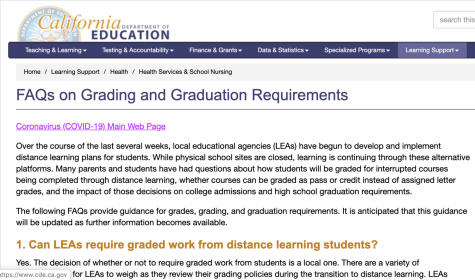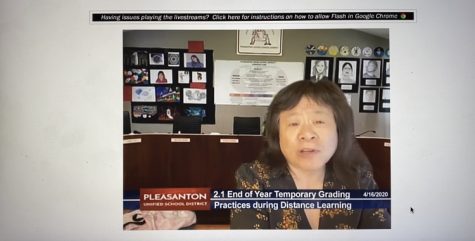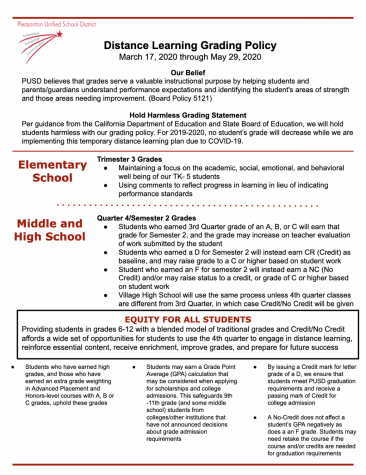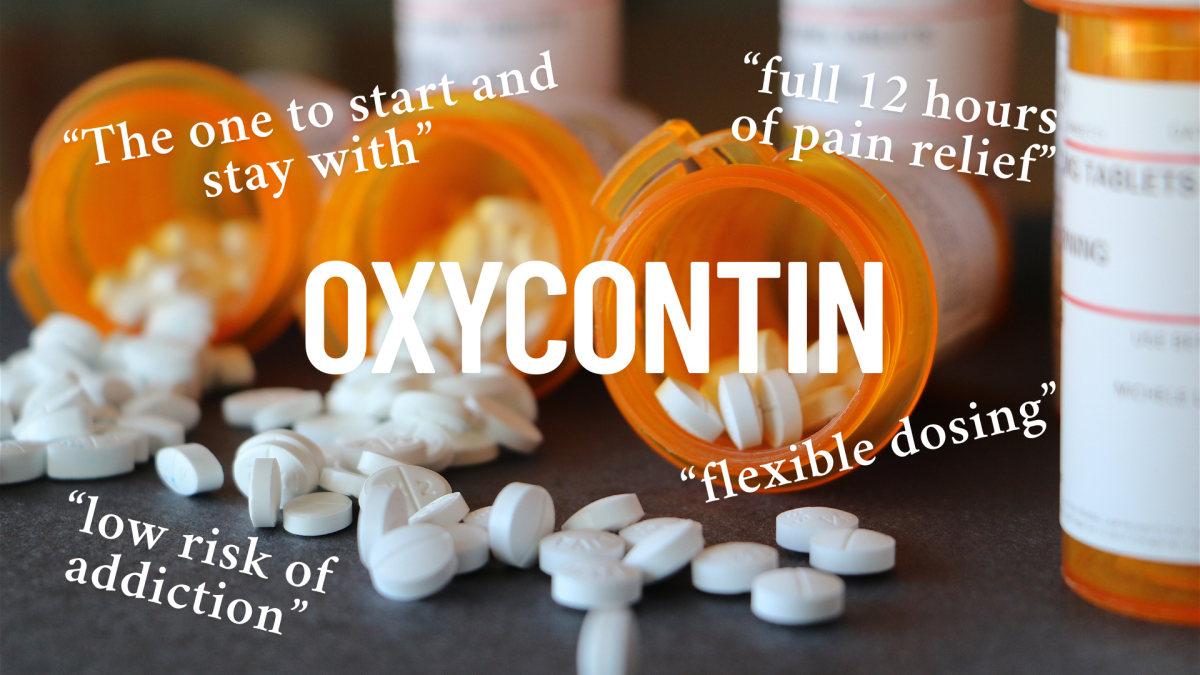PUSD Board Meeting Finalizes a Hybrid Grading System
PUSD live-streamed their Board Meeting last night. The board listened to research, data, and public comments for almost 3 hours before they made their final decision to go with a hybrid grading system.
April 17, 2020
This afternoon PUSD Superintendent David Haglund announced the results of the PUSD Special Board Meeting which finalized a new grading system. The new system for the second semester will be a combination of letter grades and credit/no credit.
After a meeting that lasted almost 3 hours, the Pleasanton School Board voted to determine how grades would work for the 4th quarter (and 2nd semester) of the 2019-2020 school year. The meeting began at 4:00 and was aired online and on TV-30 for viewers to watch.
“I was really surprised by how long the meeting was, but I was impressed by all of the research, data, and public opinion that was shared. It was obvious that the experts in our district have put a lot of time and effort into understanding what could happen to our students based on the decisions that the district makes. This was truly an informed decision, especially considering how much is still unknown as we work through this difficult time in history,” said AV Media Arts Teacher Wendy Connelly.
In addition to all of the PUSD board members and Dr. Haglund, some meeting presenters included Heather Pereira, Nimarta Grewal, Winter Jones, Patrick Gannon, Assistant Superintendent of Teaching and Learning Janell Woodward, and Assistant Superintendent of Student Support Services Ed Dialazo.

No-Harm Charge:
In an effort to protect students and families who are struggling during this pandemic, the California Department of Public Education has charged that schools implement “no-harm” grades. This was interpreted by the Board to mean that students will not earn a 4th quarter (or 2nd semester) grade that is lower than what they earned during 3rd quarter. This policy was made to ensure that every student, no matter their situation at home, can have their grades protected despite the difficulties and inconveniences of remote learning.
Surrounding districts like SRVUSD, Acalanes, and Livermore Unified have already determined that all students will receive credit/ no credit grades for the second semester, but Pleasanton District Officials have been researching trying to see if this was the best policy for PUSD students.
Grading Options Up for Consideration:
Most of the focus of the board meeting was on high school grading, since student grades are used for acceptance into college.
There were 3 options presented: a continuation of the current grading system, a credit/no credit system, and then a hybrid system which combined the first two options. All three systems would still include the “no-harm” charge made by the state.
The Hybrid grading system involves regular letter grades of A, B, and C and the credit/no credit option for those who have a D or F. As a result, any letter grade lower than a C will either receive credit or no credit, but either way they credit/no credit will not be added into a student’s GPA. A definitive process for how students can raise their grades is still being determined and discussed within the district.
“If students earn a 3rd quarter grade of A, B, or C, their grades will not go down. However, they have the opportunity to increase those grades. For the student who earns a D, they would just receive credit or they can work to raise that grade to a C or higher. And then the students who earned an F will earn no credit but will also have the opportunity to raise it to a D to earn credit and therefore be held harmless based on the information and guidance that we have right now from higher education institutions,” said PUSD Spokesperson Patrick Gannon.

How the decision was made:
During the meeting, district officials analyzed the impacts of different grading options with the help of a presentation made by Winter Jones. In the presentation, Jones took an average student and analyzed how each of the grading systems they were considering would affect that student’s GPA. The analysis showed that though the GPA was close in each situation, the student would benefit the most from the Hybrid system.
“I believed that a hybrid system was fair because it is so much more difficult to learn through remote learning given that your teacher isn’t physically present with you every day. I think this system would help compensate for those who can’t get help at home with school work from their parents,” said Amanda Wong (‘21).
Another consideration that was important to the decision was the fact that 38% of the colleges in the U.S. have not announced how they will deal with credit/no credit grades. Consequently, a credit/no credit system could give Pleasanton’s 5,000+ high school students an uncertain fate in terms of college acceptance. This was especially true for the Freshman, Sophomores, and Juniors and this was a risk that concerned district officials and the board members.
Those at the meeting also considered public comments from parents, students, and teachers when deciding which grading system would work best for the PUSD. It took Patrick Gannon almost an hour to read all of the public comments, which seemed to be completely mixed.
“The public comments were important to hear. I think that I was affected by the comments that were coming from students the most, as most of them were sharing that they were feeling overwhelmed and stressed about grades, and would prefer the Credit/No Credit option. I think student and teacher voices were represented, but that they were not highlighted to note that these are the stakeholders who will be most impacted by the decision,” said AV English Teacher Jenna Hewitt-King.
After an hour of presentations of data and research, and another hour of mixed public comments the Board focused on two main concerns:
1. Would situations at home prevent students from performing as well academically as they would if they were in a classroom every day.
AND
2. What happens to students who have worked hard to gain academic success if they were forced to have a semester of credit/no credit on their transcripts.
With all the mixed public comments, it was clear that there would be some people upset no matter what decision was made by the board.
“To echo a sentiment of one of our Trustees, this was one of the most difficult decisions we’ve had to make in our collective time in education. During this historically unprecedented and uncertain time in the world, the right decision was made in the best possible way – through strong collaboration with our world-class educators and leaders at all levels and after hearing feedback and input from hundreds of students and parents,” said Dr. Haglund.
The final decision:

To satisfy the main concerns (listed above), the Hybrid grading system was the compromise that the Board believed would best allow students to keep their academic success.
This means that students are expected to work hard and complete their classes. They will continue to get grades for their work. As, Bs, and Cs will be reflected on their report cards and transcripts for 2nd semester. Ds and Fs will be shown as “credit” for Ds and “no credit” for Fs (with the ability to go back and retake a class with an F for credit at a later time). Student’s final grade in a class should not be lower than their 3rd quarter grade.
This Hybrid grading option was the choice that the school board believed would have the least negative effect on students whose lives were currently filled with adversity due to the pandemic.
“I am very happy because I know so many people who worked so hard this semester so I’m glad that their grades will still reflect this effort, and they won’t be punished for any problems they are forced to deal with at home,” said Jillian Fahey (‘21).
For students who fail a class, the PUSD’s plans about summer school are undetermined until more information is given by the State and public health agencies. Students will be given a chance for credit recovery once they know more.
Click here to watch a copy of the video released by PUSD about the PUSD Grading Policy Update.





